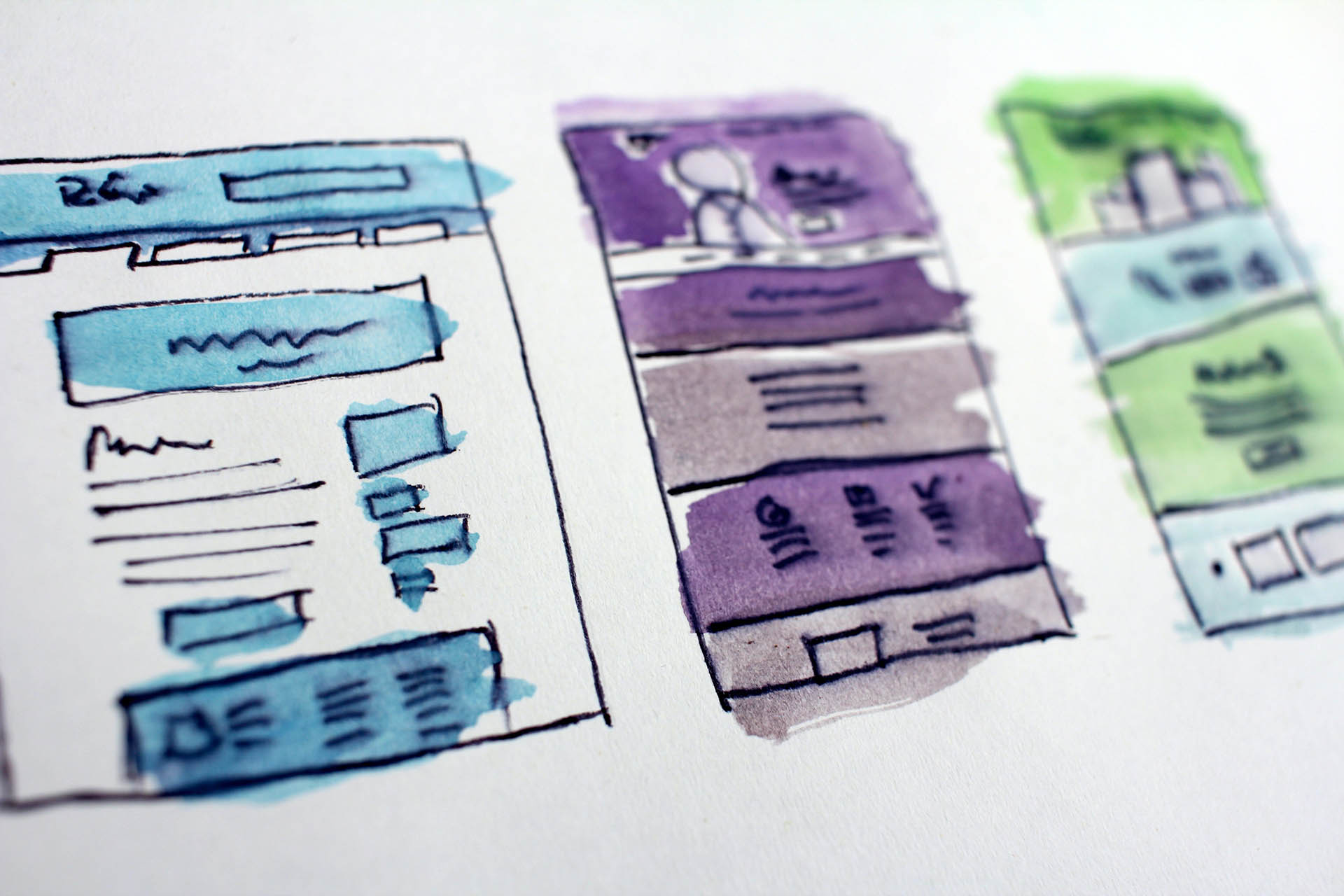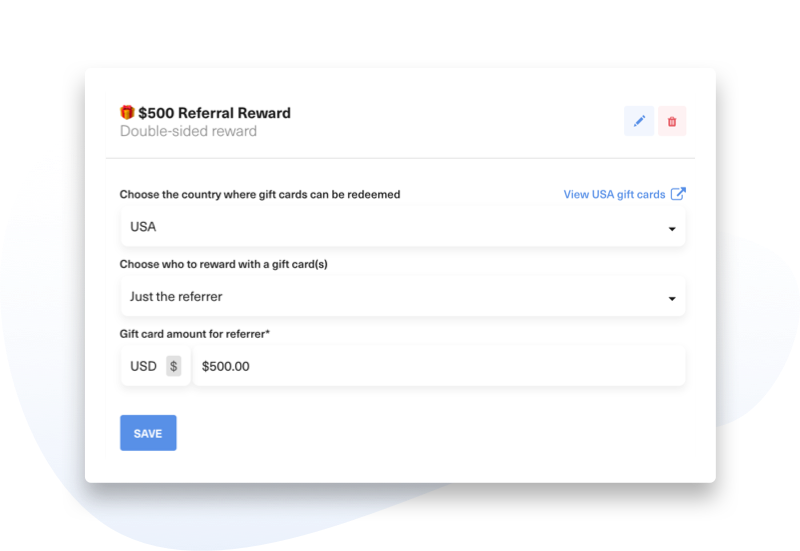Build your customer referral program without the dev time
Sign up for a free trial of GrowSurf to lower your customer acquisition costs, increase customer loyalty, and save gobs of time.
Launch Your ProgramThe no-code movement is growing rapidly with more businesses than ever turning to these tools to test ideas faster in a faster, more cost-effective way.
A no code tool is a type of web application that offers a means of building applications without the need for any programming or coding experience.
No-code apps are a new way to deploy and utilize feature-rich enterprise caliber software without coding. The no-code movement is revolutionizing business IT across the board. Their importance is becoming more crucial as automation becomes increasingly prominent in the future of technology. No matter what size or sector your organization belongs to, you’ll want to at least consider them to improve your efficiency, scalability and versatility. The ability to create dynamic, scalable applications without writing any code is something that all companies should consider when planning their tech strategy moving forward.
Now that there are platforms available, marketers who don’t code are in a better position than ever before. It used to be that you would need to learn how to code in order to use certain tools or build certain projects. No code tools have made it easier for all to become more self-sufficient in their growth by eliminating the need to consult a developer for small projects and adjustments. As marketers continue to understand and use these tools, even the most non-technical marketers have an opportunity to advance their skill set.
Technology has made the lives of many easier with its advancements. No-code tools are no different, enabling virtually anyone without computer science degrees or knowledge about programming languages to create projects on their own instead of having to rely on developers.
In this article, we will go into some of the benefits that no code tools offer and why more marketers should consider implementing them into their martech stack.

No code tools make it easier for non-technical people to build out business apps and websites without having to be fluent in coding languages. They often work by using a visual drag and drop builder, so the user can easily add visual and mechanical components then customize them using an intuitive interface. No-code platforms provide a user-friendly way to create software applications without writing code, enabling people from diverse backgrounds to turn their ideas into reality.
But the question remains: Who stands to benefit the most from no code technology? No-code tools have use cases across a wide range of industries and business functions, empowering professionals from diverse backgrounds to build solutions tailored to their needs without relying on developers.
Here's a quick list:
Low code and no code both refer to platforms that enable users with limited coding experience or knowledge of the backend technologies being used but with a major difference between them.
There is often a blurred distinction between the terms "no-code" and "low-code," and the two are sometimes used interchangeably. However, the process of creating a software product has many different levels. No-code platforms enable end users to build complete applications using visual interfaces and pre-built components without any traditional coding involved. Low-code platforms, on the other hand, provide a more extensible environment that combines visual development capabilities with the option to manually write code when needed for more advanced functionality.
On the low end, you have the drag-and-drop functionality of no-code tools using visual interfaces to guide users and help them make their own tools. The beauty of a no-code platform is that the user doesn't need to spend hours and days trying to program it but as such platforms lack the high cognitive function capabilities needed in critical situations. This is why they are only considered suitable for lesser important projects requiring less human involvement and manual input from skilled developers.
Low code tools are hybrid systems that use a combination of non-technical as well as technical specialists working together to find custom solutions. Low code tools are the safer bet when addressing complex business applications that are fundamental to an organization's operation without sacrificing scalability.
If you're looking for a quick, easy way to get started with your first project, no-code tools are perfect. They allow you to do things like create websites and landing pages without having any coding skills at all. However, as the complexity of your application increases, it will be time to move onto multiform solutions that require technical human input in order to work well.

One of the biggest advantages of no-code tools is their cost-effectiveness compared to traditional software development. Many no-code platforms offer free tiers or free trials that enable entrepreneurs, small businesses, and startups to start building and testing ideas with minimal upfront investment. Even the paid tiers of most no-code tools are very affordable relative to hiring developers or purchasing enterprise software licenses. This low barrier to entry empowers bootstrapped founders and businesses on a tight budget to validate concepts before investing significant capital.
No-code tools empower businesses and individuals to own the full lifecycle of their applications without heavy reliance on developers. Since no-code platforms use visual interfaces, non-technical users can easily make adjustments to an app's appearance, features, and functionality as needs evolve. This autonomy is especially valuable when building an MVP or new product where requirements are likely to change rapidly based on customer feedback. Rather than waiting for developer availability to implement changes, no-code enables you to iterate quickly using your direct understanding of user needs.
Coding is a complex set of languages that many people find difficult to understand and write. With so much new technology emerging everyday, unless you're proficient in the skill you might have a hard time keeping up. No code tools offer a visual solution for non-technical founders. Straightforward, often drag and drop building blocks make it easy for anyone to get started.
Coding is a complex set of languages and practices that require significant time and training to master. With technology evolving rapidly, it can be slow to develop a website challenging even for experienced developers to keep up with the latest languages, frameworks, and best practices. In contrast, no-code tools abstract away that complexity by providing visual, drag-and-drop interfaces and pre-built components that make it easy for non-technical users to get started building applications. The intuitive nature of no-code platforms dramatically lowers the learning curve compared to traditional coding, empowering a wider range of people to bring their ideas to life without years of specialized training.

Canva is a graphic design tool that aims to simplify the process of creating visual content. There are thousands of customizable templates with graphics, fonts, and colors for you to create any detail based on your preferences. Canva can be used with other applications so it‘s easy to publish your creations online.
With just a few clicks on Shopify’s brilliantly designed web interface you can get your store up and running with no coding knowledge required. Shopify is a leader in point-of-sale processing and one of the easiest, most cost effective ways to enter into ecommerce; perfect for small businesses and startups.
Typeform is a user-friendly platform that allows businesses of all sizes to create online quizzes and questionnaires in minutes. Their easy drag-and drop form builder lets you generate efficient customer surveys without the need for complicated code or confusing design tools. Typeform integrates seamlessly with many social media services including Facebook, Twitter and LinkedIn making it perfect for almost any business looking for feedback from their clientele.
Retool is a low-code platform that makes it fast and easy to build internal tools. Need custom apps, dashboards, admin panels for your business? You can use Retool to make powerful tools in minutes. The app builder includes components like tables or charts so you can whip up an entire tool with just a few clicks.
Hubspot is a no coding tool that helps marketers create websites, manage contacts, run blogs and see data trends. No experience with marketing? That's okay! Hubspot Academy has all the resources you need to get started, you'll be an expert in no time!
Airtable is a great tool if you’re looking to improve the way you collaborate with your team. It has all of the features and benefits of spreadsheets, only it's much more flexible. There are no limits on how many people or categories can be included in each database. Airtable understands there needs to be room to accommodate many moving parts.
Hockeystack is a web-based SaaS analytics platform that unites marketing and revenue data. It's the first tool of its kind used to teach marketers how to sell their products for maximum profits in real time. Hockeystack has features such as shopping carts and tools to help you price items quickly and calculate shipping.
Designed specifically for “nontechnical users who seek growth without headaches or hassle,” Hockeystack’s software has been optimized to work on desktops/tablets and smartphones, making this powerful technology accessible from anywhere, any time.
Zapier works with different no code software to create workflows that save you time and effort. You can create your own customized workflow with their intuitive tools without any prior coding knowledge required.
Integromat is an automation app that saves you time by completing repetitive tasks quickly and seamlessly. Integromat connects apps, transfers data to other platforms, and enables long automated processes. Everything runs 24/7 without supervision or attention needed!
GrowSurf's plug and play software requires only a single line-of-code to embed elements on your website, allowing for quick and customized integration of your referral campaign. GrowSurf's goal is to simplify campaign management and growth expansion. Our products also feature automated email marketing and reward fulfillment that provide detailed analytics and insights on referral program users.


Sign up for a free trial of GrowSurf to lower your customer acquisition costs, increase customer loyalty, and save gobs of time.
Launch Your ProgramSubstack is an email newsletter solution for small publishers who want to convert their subscribers into paying customers. It provides a mailing list management system, CMS and uses Stripe integration for payments. Users also get access to the platform that hosts subscriber-only material so writers have everything they need in one place, allowing users to start a paid newsletter in just minutes!
Stripe provides a collection of tools that make it easy for businesses to accept payments in the form of credit cards. These integrations include HubSpot, and are designed to be simple and secure -- all while saving you time from having to code your own payment system when selling online.
AWeber is an email marketing and automation service that has helped over 1 million small businesses, entrepreneurs, and nonprofits generate more revenue. AWeber integrates with 450 partner software solutions available through the company's website, seamlessly allowing customers to access multiple platforms for different purposes all in one place.
MailChimp is an email marketing service that creates, manages, and sends emails.
Mailchimp is one of the world's largest email marketing tools and the best part? MailChimp is super easy to use! Features like autoresponders or flexible sign-up forms make customer management simple and painless (all you need to do is copy and paste!). The fully automated service can be used not only for marketing but also for sales. Emails are sent according to the campaign details set up ahead of time including frequency, customer division and what days of the week specific campaigns should go out.
With Zoom, you can create a video conference with up to 500 participants and speakers by hosting the meeting on your own website or blog. All you need is a computer and an internet connection and the whole world will be able to hear and see your presentation perfectly. Zoom's no-code integration capabilities allow you to easily embed video conferencing functionality into your website or app, providing a seamless user experience.
Beyond just video meetings, Zoom also offers a suite of collaboration tools like chat, file sharing, and virtual whiteboards that can be leveraged through their APIs and SDKs. This makes Zoom a versatile no-code solution for businesses looking to enhance communication and teamwork without complex custom development.
The rise of no-code platforms represents a paradigm shift in how software and applications are created. As no-code tools become more powerful and user-friendly, they are democratizing technology by lowering the barriers to entry. No longer is the ability to create digital products and automate business processes limited only to those with coding expertise.
From small businesses and entrepreneurs to enterprise organizations, no-code enables teams across every sector to innovate rapidly without the constraints of developer resources and technical debt. As AI and machine learning capabilities get integrated into no-code platforms, we'll see an acceleration of what's possible without traditional coding.
While no-code may not completely replace coding for the most complex, mission-critical applications, it empowers a new generation of makers and creators to turn their ideas into reality more seamlessly than ever before. The future looks bright with marketing automation and other transformative use cases being powered by the rise of no-code tools.

Sign up for a free trial of GrowSurf to lower your customer acquisition costs, increase customer loyalty, and save gobs of time.
Launch Your Program
GrowSurf is modern referral program software that helps product and marketing teams launch an in-product customer referral program in days, not weeks. Start your free trial today.
Loyalty and referral programs are often used interchangeably, but they’re two different things. Read on and discover which one is better for your business.
The easiest way to make a product go viral? Build it with a viral design. Learn the 6 best ways to incorporate virality into product design.
Zoom's business strategy boils down to just 3 concepts: customer-driven design, radical transparency and its freemium model. Here's how Zoom rose to the top: